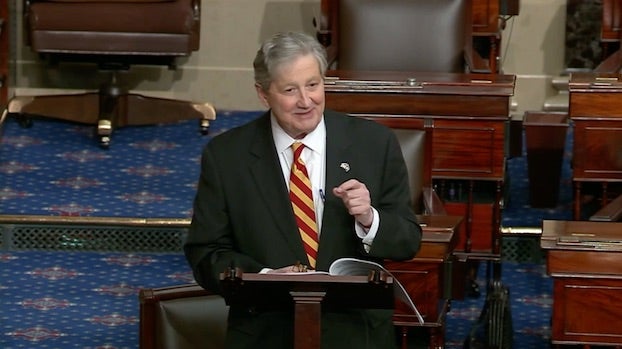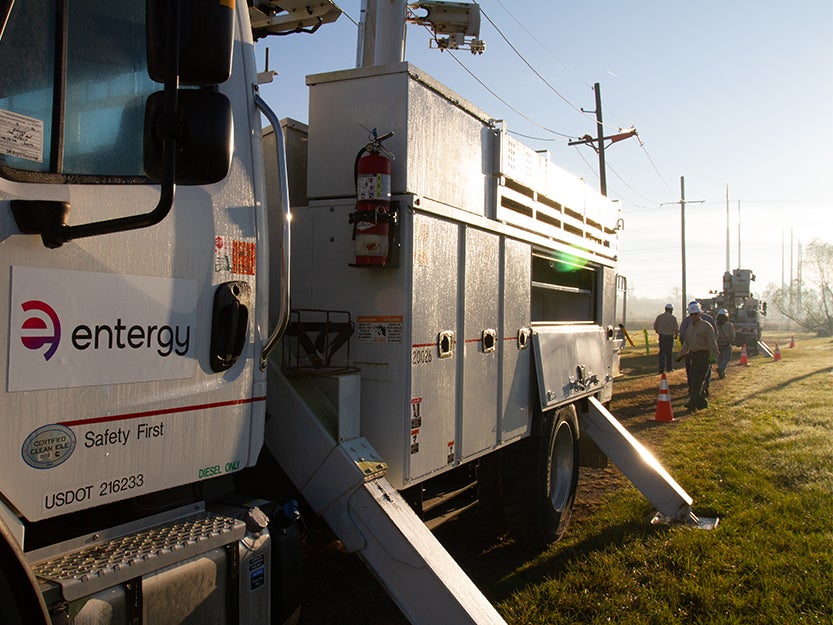Falling oil prices could force cuts
Published 11:12 am Friday, December 26, 2014
BATON ROUGE (AP) — The budget hole facing Gov. Bobby Jindal and lawmakers next year is a grim figure, topping $1.4 billion. But that may not even be the worst-case scenario.
With oil prices continuing to plummet, state officials are readying for the possibility they haven’t yet hit rock bottom. They may have to deal with another deficit in the current $25 billion state budget before the fiscal year ends June 30, while next year’s shortfall could grow even larger.
The price of oil has fallen by nearly half in just six months. That helps drivers at the gas pump, but it can wreak havoc on Louisiana’s budget. About 13 percent of this year’s state’s general fund is tied to severance taxes and mineral royalties from energy production.
A barrel of oil cost more than $100 this summer and now hovers near the $50 range. Louisiana’s budget is built on a per-barrel price of $81.33 this year, so if oil prices don’t pick up, the state’s income forecasting panel will have to downgrade its energy income estimates.
The forecasting panel is known as the Revenue Estimating Conference. For every dollar it drops the annual oil price in income projections, that’s about a $12 million hit to the state general fund.
The conference dropped its oil and gas income forecast by $93 million last month because of oil prices.
Combined with weaker-than-expected personal income taxes, that blew a $170 million hole in the budget that the Jindal administration filled with patchwork financing, a freeze on nonessential spending and modest cuts across agencies. The state lessened spending on school testing contracts and mentor programs for at-risk youth and won’t fill some vacant jobs.
But Commissioner of Administration Kristy Nichols, the governor’s chief budget adviser, is bracing for more bad news when the Revenue Estimating Conference meets again in January because of oil.
“We’re tracking that number very closely but anticipating another adjustment,” she said.
Greg Albrecht, the Legislature’s chief economist, said the oil price nosedive may not cause as much damage to the budget as is feared.
Louisiana’s general fund is a mix of about 40 revenue sources, with about 60 percent of it tied to sales and income taxes, Albrecht said. The state’s running ahead of forecast on sales tax revenue and a bit behind on income tax.
“Mineral can go down if we can get some traction on these other two,” he said. “We’re going to look at all of them, not just oil prices. So, you can’t just say it’s all bad. There will be pluses and minuses.”
The Jindal administration has started working on contingency plans in case the state faces another deficit this fiscal year and has to find places to slash spending.
“We’re still looking at making reductions in professional services and contracts, for this year even as we speak,” Nichols said.
In addition, she said agencies are using a consultant’s recommendations for ways to save the state money or find other available revenue sources to chip away at any gaps.
Meanwhile, Nichols’ office also is trying to piece together a spending proposal for the new budget year that begins July 1. The governor’s budget recommendations are due to lawmakers by Feb. 27. Lawmakers will work on a final version of that 2015-16 budget during their next regular legislative session, which runs from April until mid-June.





